|
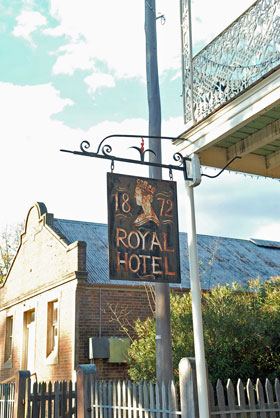
Hill End hotel sign
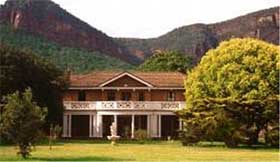
Glen Davis Boutique Hotel, Capertee Valley, NSW
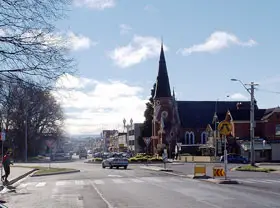
Bathurst
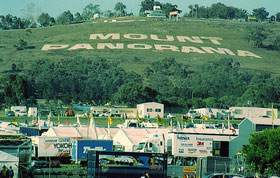
Mt. Panorama, Bathurst
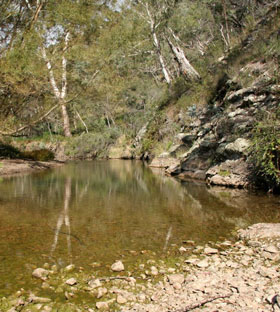
Turon River near Sofala
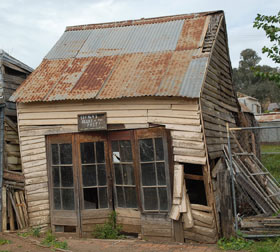
Sofala's Relics Of The Past store
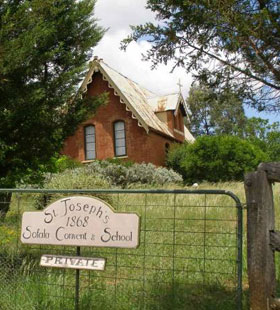
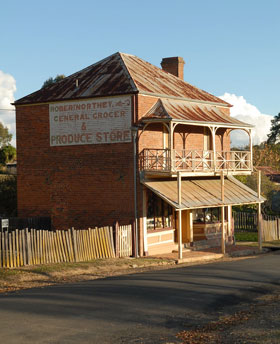
Hill End General Grocer and Produce Store
|
The discovery of gold in the Bathurst region in 1851 marked the beginning of the Australian gold rushes and a radical change in the economic and social fabric of the nation. In 1852 alone, 370,000 immigrants arrived in Australia and the economy of the nation boomed. The miners are long gone, but the settlements they built remain, and today they provide a fascinating gateway through which to experience a vivid chapter in our nation's history.

Location: Bathurst Plains, Central West, NSW
Length: round trip from Bathurst, 153 km; Bathurst - Lithgow via Hill End, Sofala and Capertee, 226 km
Suggested return journey: this journey is a loop, commencing and finishing in Bathurst
Features/attractions: old mining villages of the 1850s goldrush days
Minimum duration (one way): 3 hours/5 hours
What you will see: This drive is a round trip from Bathurst to the goldmining ghost towns of Hill End and Sofala. It begins by following The Bridle Track, which is reached via the Great Western Highway from Bathurst. The drive begins at Gilmore Street at Kelso, which is signposted "Sofala". Simple follow the Bridle Track signs out of town. After crossing the Macquarie River, you will reach the beginning of The Bridle Track Road 10 km past Eglinton at Duramara. The Bridal Track was originally the route which the gold miners from Hill End, in the early 1870s, took to Bathurst to pick up supplies. The first 32 km are bitumen, after which it becomes a dirt road for the final 40 kms into Hill End. The road follows the Macquarie River almost to Hill End. The road follows the river gorge before climbing precariously up the side of a mountain to the top of Monaghans Bluff, where the views are awe inspiring. The road then follows Turon Gorge before making its very steep descent into Hill End.
When you leave Hill End, follow the 37 km road to Sofala across the plateau rather than heading back towards Bathurst. At Devil's Pinch the road makes a steep descent into the Turon River valley, passing the long abandoned Sofala gold diggings on its way to the village. From Sofala, the 45 km drive back to Bathurst along Peel Road via Wattle Flat is bitumen all the way.
If your eventual destination is Sydney, there is an alternative route that can be taken from Sofala which returns you to the Great western Highway at Lithgow. Rather than taking the road to Bathurst at Sofala, take Sofala Road to Ilford, then travel south to Lithgow on the Castlereagh Highway. Just beyond the little town of Capertee is Pearsons Lookout, on the left, which provides views eastwards over the Capertee Valley towards the old shale mining town of Glen Davis and the orange sandstone cliffs of Wollemi National Park.
About Bathurst: Bathurst is Australia’s oldest inland settlement. In the early days of the colony the area was used as an experimental farm. Bathurst was in a prime position to capitalise on the 1851 goldrush, and was the trading service hub for its own goldfields as well as for most of the gold from the fields at Ophir, Hill End and Sofala.
Bathurst is today a gracious and historically significant town of grand heritage buildings, parklands and tree-lined streets. It's home to the world-renowned motor racing circuit at Mount Panorama, the only permanent public road-racing circuit in Australia. Two major endurance meets are held each year: the 24-hour Procar Endurance and the 1,000-km V8 Supercars championship.

Sofala
About Sofala: Sofala offers the authentic old-world charm of a former gold-rush town. Small and peaceful today, its out-of-the-wayness has attracted artists over the years. In 1947, Russell Drysdale captured the main street and its timber buildings in its hot, dusty emptiness in his famous work, "Sofala". 27 years later, a young Australian filmmaker named Peter Weir used Sofala to depict the town of Paris in his quirky comedy thriller, The Cars That Ate Paris.
Sofala came into being just four months after prospector Edward Hargraves claimed to have first discovered gold at Summerhill Creek in February 1851. A huge tent city soon covered the valley as people flocked to the area to find their fortune. Gold quickly financed the construction of pubs and buildings to service the miners. Sofala’s gold rush was short-lived though, and after the population peaked at 10,000, only a few hundred prospectors were left by 1854. Commercial goldmining finally ceased in 1948.

Hill End
About Hill End: Gold was discovered at Hill End, then known as Bald Hill, in 1851, but when the world's largest specimen of reef gold - the 'Holtermann's Nugget', weighing 285 kg and measured 150 cm by 66 cm was discovered in Hill End in 1872, the town's population exploded. It soon grew to over 10,000 people, making it the largest inland settlement in NSW with a kilometre plus of shopfronts, including five banks, two newspapers, a brewery, an opium den, an oyster bar, 27 hotels - all doing well - now the Royal Hotel (1872) is the only one remaining.
Gold mining activity gradually dwindled, until by the 1920s there were just a few hundred miners left to pick over the former diggings. The town was proclaimed an historic site in 1967, when the National Parks and Wildlife Service began preserving and restoring the buildings on the site.
With its museum displays and many preserved buildings, Hill End offers a fascinating insight into the 19th-century gold rush. Visitors also have the opportunity to sift through old mining rubble and perhaps find something of value.
The rugged scenery has inspired many renowned Australian painters, including Donald Friend and Russell Drysdale, who painted some of the finest Australian landscapes of the 20th century.
Distances:
Bathurst - Hill End: 71 km
Hill End - Sofala: 37 km
Sofala - Bathurst: 45 km
Sofala - Lithgow via Capertee: 118 km
|